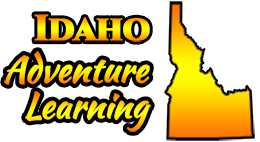The Big Burn
Submitted by Randy Boyd on Tue, 2017-06-20 00:00
I'm especially excited that you all get to visit the Pulaski Trail today!! If you haven't read The Big Burn by Timonthy Egan, it is a great book! Not only does it talk about Ed Pulaski but it has a lot to do with Teddy Roosevelt and how the Forest Service came to be.
As you hike the trail and see pictures of the devastation, think about what Pulaski and his fellow fire fighters must have gone through.
What kind of impact did this fire have the the ecosystems of the area? With around 3 million acres of devastation it must have a huge impact on the ecosystem. With vegatation gone from around rivers and streams what kind of impact did it have on the streams and rivers?
Where all the impacts of the fires negative? For example, did the fire destroy diseased trees that in the long run helped the health of the surrounding forests?

Comments
Negatives/Positives
Obviously forest fires are a concern to the PNW, but Randy I think people forget the importance of wild fires. You mentioned old growth timber and helping rid forests of rotting trees, and I would like to further that by adding in parts of our carbon, nitrogren, and phosphorus cycle into this equation. Forest fires allow "trapped" carbon, nitrogen, and phosphorus in the trees and allow these important elements back into the soil for use by other healthy, young types of vegetation. It's nice when we can limit the damage caused by forest fires, but they are a necessary part to keeping healthy forests.
On the negative side, forest critters generally lose habitat due to forest fires, and lots of erosion can occur, as well. This may well in fact change the dynamic of an ecosystem in a very short amount of time. Huge transfers of the three aforementioned elements can interrupt important biological processes in an ecosystem. Too many nitrogen and phosphorus can cause the water to become eutrophic, which will lead to loss of life in the aquatic system.
Teddy Roosevelt is one of my favorite presidents, because of his love of nature and the great outdoors. If it wasn't for him and John Fletcher (Iowa), who helped pass the Antiquities Act of 1906, along with President Woodrow Wilson establishing the National Park Service in 1916, we may not have some of our famous parks and monuments.
Absolutely one of my favorites
I have read this book twice. Egan is a historian cloaked in the coverings of a fantastic storyteller. I enjoyed most his menagerie of frontier peoples and their personal narratives. I am by no means an expert on the questions you have posed, Randy, but have read that all forests necessitate cleansing and forest fires are nature's tool for systematic rejuvenation and rebirth. I know there is great debate regarding the merits of altering Mother Nature's path controlling burns, but on the whole, I think I have encountered many scientists reporting the pros of forest fires on ecosystems' structures.
The Idaho Museum of Natural History, Pocatello, ID, has a current exhibit running through December 2017 titled, "Living with Fire." If you are in the area, stop by! The exhibit focuses on fires in Idaho beginning with the 1910 Great Fire and ending with the devastating Charlotte Fire here in Pocatello in 2012. For reading, if interested, the GSI Training and Research Center at ISU has published studies and papers that can be found online disucssing the effects of wildfires on ecosystems in SE Idaho.
I have attached a link that provides a brief history of the Big Burn and some insight to our nation's forest fire policies.
I have also attached a link to a clip of a documentary of our Pocatello/Bannock County Charlotte Fire that occurred in 2012.
Egan fan club
Egan is a historian cloaked in the coverings of a fantastic storyteller- Well put, Darcy! He's one of my absolute favorites. I'd also highly recommend his "The Good Rain" about the Pacific Northwest.